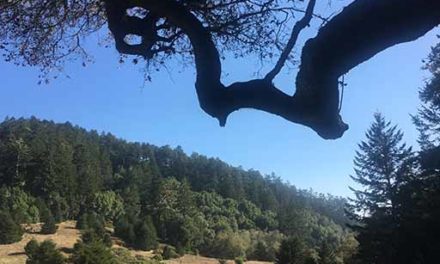Something to keep in mind…
Bernie’s Climate plan:
• is the most comprehensive in scale & mechanisms
• costs $16 trillion over 15 years
• pays for itself
• promises to take on the fossil fuel billionaires to whom we have been paying $642B/yr in subsidies
• costs $16T over 15 years (a bit over $1T/yr) minus $642B/yr fossil fuel subsidy yields a cost of $450B/yr

The U.S. government pays $642 billion in subsidies to the fossil fuel industry. Given that lobbyists write the laws that Congress passes, this is not surprising. A breakdown of these subsidies would be difficult to discover, but interesting.
Bernie is rising in the polls, mainly due to the support of young people. Young people, unlike others, actually know that the climate is a big deal and they realize that he has a comprehensive climate plan. They may or may not, however, realize how rigged the system is. If Bernie manages to be nominated it will be a miracle. It is not impossible, but I believe the probability is low given the hard work that the DNC and mainstream media are doing to prevent it.
In the meantime, the stability of the climate is unraveling at breakneck speed. It will be a miracle if we humans can react in time. We are still here, though, so perhaps we can still do something.
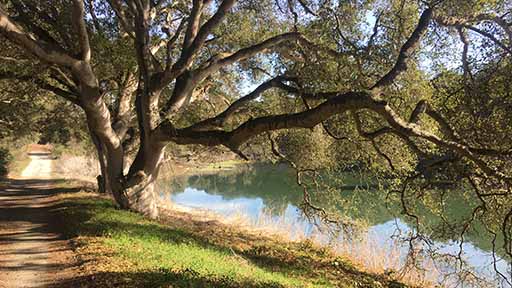
HOT AIR NEWS ROUNDUP
This Week’s Highlights
Greta Thunberg | COP 25 High Level Event on Climate Emergency
[VIDEO]
New ice river detected at Arctic glacier adds to rising seas
Science Daily 12-19-19
Geologists, examining the desolate Vavilov ice cap on the northern fringe of Siberia in the Arctic Circle, have for the first time observed rapid ice loss from an improbable new river of ice, according to new research in the journal Geophysical Research Letters.
Observing the ice cap over a period of years, the researchers thought they were seeing a glacial surge, a temporary condition in which snow buildup ebbs and flows over long time scales. But in this area of the world that is frozen for most of the year, that glacial surge grew faster, wider and fanned out. Having shed nearly 11% of its mass — or 9.5 billion tons of ice since 2013, it may become a more-permanent, impactful ice stream, researchers say. “This is the first documented case of an ice stream being formed. We really didn’t expect to see this,”
COP25: Over 40 Gulf State Delegates Are Current or Former Employees of Fossil Fuel Companies
DeSmog 12-13-19
Saudi Arabia was also accused by Green MEP Bas Eikhout of failing to uphold the “environmental integrity” of the Paris Agreement at the meeting. He said Saudi Arabia’s delegation, along with those of Brazil and Australia, were lobbying to weaken rules around carbon trading — a key point of conflict in the Madrid taks.
At last year’s meeting in Poland, Saudi Arabia and Kuwait teamed up with Russia and the US to prevent the findings of the Intergovernmental Panel on Climate Change’s landmark 1.5C report from being officially welcomed at the proceedings. Ayman Shasly, senior negotiator for Saudi Arabia and a former employee at Aramco, defended the country’s decision not to “welcome” the findings of a key UN climate report in an interview with Carbon Brief last year.
Australia’s Fires Emitted Half of the Country’s Annual CO2 Emissions
EcoWatch 12-18-19
The bushfires that have been tearing through New South Wales and Queensland, decimating koala habitats, taxing the water supply, and choking the air since August have claimed six lives.
Now, new NASA data shows that the fires have emitted 250 million tons of carbon dioxide, the equivalent of half thee country’s annual greenhouse gas emissions, according to The Guardian. In 2018, Australia’s total greenhouse has emissions was 532 million tons of carbon dioxide. Dr. Niels Andela, a scientist at the NASA’s Goddard Space Flight Center and a collaborator in the Global Fire Emissions Database, gave the data to The Guardian Australia. Usually, bushfires are considered carbon neutral, because when vegetation regrows it absorbs the carbon dioxide the fires have emitted.
However, scientists are predicting that the scale of this year’s fires coupled with drought-stricken forests will make it impossible for the vegetation to absorb the carbon, as The Guardian reported.
“Drought-stressed trees recover less well – carbohydrates reserves are exhausted – and under climate change tree growth may be slow and fires more frequent, meaning less tree biomass and even loss of forest cover,” said David Bowman, a fire ecologist at the University of Tasmania, to the Guardian. “This is a nasty negative feedback cycle of a biosphere carbon sink becoming a source [of carbon].”

ADAPTION AND RESILIENCE
Limiting the loss of nature
Science Dialy 12-16-19
With only about half of Earth’s terrestrial surface remaining as natural vegetation, a University of Queensland-led team has proposed an international goal to halt its continued loss.
The team, led by Professor Martine Maron, examined how a global goal of ‘no net loss’ of natural ecosystems could work, where some nations seek net increases in over-depleted natural vegetation, while recognising that for others, limited further losses of ecosystems might be unavoidable.
“Across the globe, our natural habitats are suffering, with alarming impacts on biodiversity, the climate and other critical natural systems — impacts that affect people too,” Professor Maron said. “To stop the loss, there have been calls for global policy-makers to set targets to protect the nature we have left. “It’s a lofty goal, but for it to be achievable, it needs to be equitable.
“And that means recognising that some nations might need to contribute more to conservation and restoration than others.” The researchers calculated the depletion of natural ecosystems in 170 countries and considered the socioeconomic factors at play in each.
Taking the carbon out of construction with engineered wood
MIT 12-11-19
Recent studies have shown that engineered wood products — composed of wood and various types of adhesive to enhance physical strength — involve far fewer carbon dioxide emissions than mineral-based building materials, and at lower cost.
Now new research in the journal Energy Economics explores the potential environmental and economic impact in the United States of substituting lumber for energy-intensive building materials such as cement and steel, which account for nearly 10 percent of human-made GHG emissions and are among the hardest to reduce.
“To our knowledge, this study is the first economy-wide analysis to evaluate the economic and emissions impacts of substituting lumber products for more CO2-intensive materials in the construction sector,” says the study’s lead author Niven Winchester, a research scientist at the MIT Joint Program on the Science and Policy of Global Change and Motu Economic and Public Policy Research.
“There is no silver bullet to reduce GHGs, so exploiting a suite of emission-abatement options is required to mitigate climate change.”
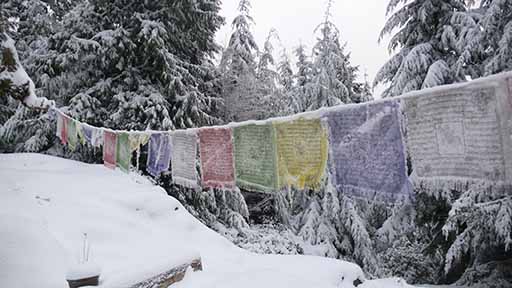
LEGISLATION, ELECTIONS & POLICY
These Cities Want to Ban Natural Gas. But Would It Be Legal?
Inside Climate News 12-12-19
Berkeley, California, passed the first such ban in the country this past summer, and other West Coast cities have since followed with similar restrictions. But in Massachusetts, as Cambridge discovered on Wednesday, it might be harder—if not impossible—to do. The reason: the city ordinances and town bylaws in Massachusetts may conflict with existing regulations that are governed by the state.
Climate crisis: Australian businesses back net zero carbon emissions by 2050
The Guardian 12-19-19
Australian businesses are calling for a more ambitious national climate policy, backing a target of net zero emissions by 2050 and raising concerns about the lack of a coordinated energy policy and the government’s proposed use of carryover credits.
The findings are contained in a Carbon Market Institute survey of more than 200 businesses, to be released on Thursday, which reveals 96% of those surveyed believe Australia should not delay the transition to a decarbonised economy.
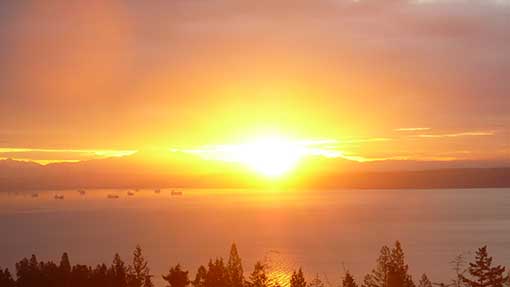
THE FIRES
Australia’s NSW declares state of emergency for bushfires
Reuters12-19-19
The Australian state of New South Wales (NSW) declared its second state of emergency in two months on Thursday as temperatures were set to soar above 40C (104F) and nearly 100 bushfires were burning throughout the state, with authorities concerned about fires surrounding Sydney.
The state of emergency will last seven days, running past Christmas, NSW Premier Gladys Berejiklian said. … Australia is experiencing a nationwide heat wave. The country recorded its highest average maximum temperature of 40.9C (105.6F) on Tuesday, and Bureau of Meteorology data shows that record was likely to be exceeded again this week.

THE ARCTIC
Arctic Report Card 2019: Extreme Ice Loss, Dying Species as Global Warming Worsens
DeSmog 12-10-19
Climate change is playing out across the Arctic in dramatic ways. The National Oceanic and Atmospheric Administration (NOAA) and its partners describe many of them in their annual Arctic Report Card, released Tuesday. Among the 2019 report’s findings:
• The average annual surface air temperature in the Arctic from October 2018 through August 2019 was the second warmest in the observational record.
• This year’s minimum Arctic sea ice extent tied for the second lowest in the satellite record.
• The Bering Sea saw record low winter sea ice in 2018 and 2019. The group Bering Sea Elders report having less access to subsistence foods, and that warming waters and ice loss are having cascading impacts on the food web.
• Birds are being affected, including the breeding population of ivory gull in the Canadian Arctic falling 70 percent since the 1980s.
• Greenland’s ice sheet also experienced rapid melting in 2019—beginning earlier than usual and reaching 95 percent of the surface.
FOSSIL FUELS
Argentina Wants a Fracking Boom. The US Offers a Cautionary Tale
DeSmog12-12-19
Argentina has some of the largest natural gas and oil reserves in the world and “possibly the most prospective outside of North America,” according to the U.S. Energy Information Administration. If some other country is going to successfully replicate the U.S. shale revolution, most experts put Argentina pretty high on that list. While the U.S. shale industry is showing its age, Argentina’s Vaca Muerta shale is in its early stages, with only 4 percent of the acreage developed thus far. The country feels a sense of urgency. …
It has taken on a level of political significance that outstrips its immediate economic potential. In Argentina, Vaca Muerta is treated as the country’s chance at salvation, with fracking seen as doing everything at once — creating jobs, reducing the debt burden, plugging the energy deficit and turning Argentina into a major player on the global oil and gas stage. …
Because the industry was effectively forced to sell at a loss, drilling activity in the Vaca Muerta plunged by 54 percent in the months following the freeze. The industry scrapped a dozen rigs and laid off 1,200 workers, with more job cuts likely.
Companies pulled back on drilling, idling equipment and essentially hitting the pause button until the incoming President offered more clarity on the pricing policy. Drilling activity picked up in November after the price freeze ended, but the sudden slowdown suggests the financial case for fracking in Vaca Muerta is “not solid.”
Energy Analysts Deliver More Bad News for US Fracking Industry’s Business Model
DeSmog12-17-19
This month, the energy consulting firm Wood MacKenzie gave an online presentation that basically debunked the whole business model of the shale industry. In this webinar, which explored the declining production rates of oil wells in the Permian region, research director Ben Shattuck noted how it was impossible to accurately forecast how much oil a shale play held based on estimates from existing wells.
“Over the years of us doing this, as analysts, we’ve learned that you really have to do it well by well,” Shattuck explained of analyzing well performance. “You cannot take anything for granted.” For an industry that has raised hundreds of billions of dollars promising future performance based on the production of a few wells, this is not good news. And particularly for the Permian, the nation’s most productive shale play, located in Texas and New Mexico.
Up until now, the basic premise of the fracking business model has been for a company to lease some land, drill until finding a high-volume well, hype to the press this well and the many others it plans to drill on the rest of its acreage, and promise a bright future, all while borrowing huge sums of money to drill and frack the wells.
Throughout the seminar, Wood MacKenzie analysts emphasized that companies can’t reliably predict future oil production by “clustering” wells, that is, estimating volumes of many future wells based on the performance of a small number of nearby existing wells, and described the practice as potentially “misleading.”
Shattuck called out how the old business model of firms borrowing money from investors while hoping for future payouts on record-breaking wells no longer works. He summed up the situation:
“We’re transitioning to a point in time, where the investment community was enamored of the next well and how big it might be.That has changed for a variety of reasons. One very important reason is the next well might not be bigger. It might be smaller.”
WEATHER
‘Enormous challenge’: Sydney suburb Penrith braces for 44C as heatwave hits NSW on Thursday
The Guardian 12-19-19
On Thursday, it will, potentially and unhappily, be able to lay claim to being the hottest place in Sydney: it is forecast to hit 44C. On Saturday, it will reach 45C. And it will be hotter of course, under the sun, or in a car or on a metal bench.
And while Tuesday was the hottest day on record in Australia, Thursday is likely to be even hotter. Firefighters across New South Wales will confront an “enormous challenge” in coming days as temperatures soar and volatile winds whip up dangerous bushfires burning across the state.
Deep South Tornado Outbreak Leaves 4 Dead, Long Swaths of Damage
Category Six 12-17-19
Update (December 18): At least 28 tornadoes have been confirmed from Monday and Tuesday, according to a compilation from Jonathan Erdman at weather.com. Seven of those were rated EF2 on the Enhanced Fujita Scale, and four were confirmed at EF3 strength. …
As a powerful upper level storm well captured by models approached the Deep South, sea surface temperatures running well above average across the Gulf of Mexico (1-2°C, or 2-4°F) may have helped to moisten low-level air more than anticipated.
By late morning, a belt of unstable air had worked its way into central and northern Louisiana and southern Mississippi, and SPC upgraded its outlook to “moderate” (which is actually the second highest of the five levels). The center noted the “potential for sustained warm-sector supercells” with a risk of “multiple significant tornadoes.”
62 Mile Long Tornado
Wood TV 12-18-19
The main tornado that moved across Louisiana has been rated a strong EF-3. The twister had a continuous path of 62 miles and was a big one, up to 400 yards wide. The tornado started near the town of DeRidder and moved northeast to Alexandria. The tornado was seen from the control tower of the airport at Alexandria. There was one fatality.s
HEALTH
In New Study Naming Pollution the ‘Largest Environmental Threat to Health,’ US Ranks Among Top 10 Nations for Premature Deaths
Common Dreams 12-181-19
An analysis published Wednesday found that “exposure to toxic air, water, soil, and chemical pollution” kills 8.3 million people worldwide each year, with the United States among the 10 countries that have the most pollution-related premature deaths—underscoring the necessity of urgent, collaborative efforts to safeguard public health. …
Based on the findings, the group behind the new report, the Global Alliance on Health and Pollution (GAHP), has three main messages for both policymakers and the public:
• Pollution is the largest environmental threat to health;
• Pollution has been severely neglected and has not received adequate attention at private or government levels;
• Pollution can be controlled with solutions that already exist.

WILDLIFE & THE ENVIRONMENT
Birds’ seasonal migrations shift earlier as climate changes
Science Daily 12-16-19
In what the authors believe is one of the first studies to examine climate change impact on the timing of bird migration on a continental scale, researchers report that spring migrants were likely to pass certain stops earlier now than they would have 20 years ago. Also, temperature and migration timing were closely aligned, with the greatest changes in migration timing occurring in the regions warming most rapidly. Timing shifts were less apparent in fall, they add.
Food at risk as third of plants face extinction
Climate News Network 12-17-19
Botanists have made a new census of terrestrial plants – only to find that with nearly 40% of them rare, or extremely rare, this may put food at risk. And a second team of researchers, in a separate study, has established that some of these rare or vanishing species could include the wild relatives of some of the planet’s most popular vegetables.
The two studies matter. The first underlines yet another reason for new and determined conservation strategies to preserve the extraordinary natural variety and richness of life – the shorthand word that scientists use is biodiversity – already under pressure from the explosion in human numbers, the destruction of natural habitats and the looming catastrophe of climate change driven by rapidly rising global temperatures.
And the second study is simply a matter of the next lunch or dinner: many rare plants are survivors with the resources to adapt to change. In a fast-changing world, crop breeders may need to go back to the wild relatives to look for the genes that will keep the commercial carrots, courgettes, pumpkins and chilli peppers on the grocery shelves.
US scientists and international colleagues report in the journal Science Advances that they worked for 10 years and compiled 20 million observational records to establish a simple plant census: the forests, grasslands, scrublands, tundra and swamps of the wild world are home to about 435,000 unique plant species.
“The wild relatives of crops are one of the key tools used to breed crops adapted to difficult conditions. Some of them are sure to disappear from their natural habitats without urgent action” And of this huge number, a surprising 36.5% are “exceedingly rare.”
By this, researchers mean that these species have been observed and recorded no more than five times in the last 300 years of systematic botanical research.

PROTESTS • EXTINCTION REBELLION • RESISTANCE
Extinction Rebellion
JOIN XR USA: on their website
XR NEWSLETTERS & EVENTS: on their website
XR USA: on YOUTUBE
NEW XR TRUTH TELLER SITE: on TRUTH TELLER.LIFE
“Calling all concerned Citizens: Tell the world what you know”
Humanity has the know-how to avert catastrophic climate and ecological breakdown. Yet we’re failing to heed the scientific warnings and put them in place. Why aren’t we adopting emergency measures the world over? And what are the near-term consequences of inaction? Do you know something that would help reveal what’s really going on?
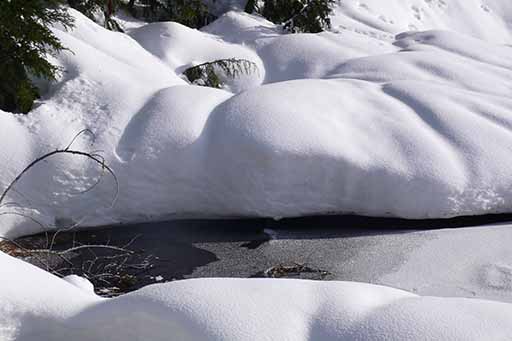
CLIMATE STUDIES
Global urban growth typified by suburbs, not skyscrapers PHYS ORG” 12-17-19
These outward patterns of urban growth are generally considered inefficient and unsustainable because of their high energy and maintenance demands and intensive land use.
However, the study points to opportunities to promote more sustainable development in many of the world’s growing cities where outward growth is occurring at a slower pace. “While these trends are probably not sustainable in the long term, it’s not too late to shape the future of what these cities look like,” said Richa Mahtta, a research associate at F&ES and lead author of the paper.
Global Warnings
Paul Beckwith: “I declare a global climate change emergency to claw back up the rock face to attempt to regain system stability, or face an untenable calamity of biblical proportions.”
Kevin Hester: “There is no past analogue for the rapidity of what we are baring witness to. There has been a flood of articles … 2C is no longer attainable and that we are heading for dangerous climate change”
Magi Amma: We need to turn on a dime at mach nine!
…
Equivalencies:
• 1 gigatonne = 1 billion tons
• 1 gigatonne Carbon = 3.67 gigatonnes CO2
• 1 part per million (ppm) of atmospheric CO2 = 7.81 gigatonnes CO2
• 1 part per million of atmospheric carbon = 2.13 gigatonnes of carbon




